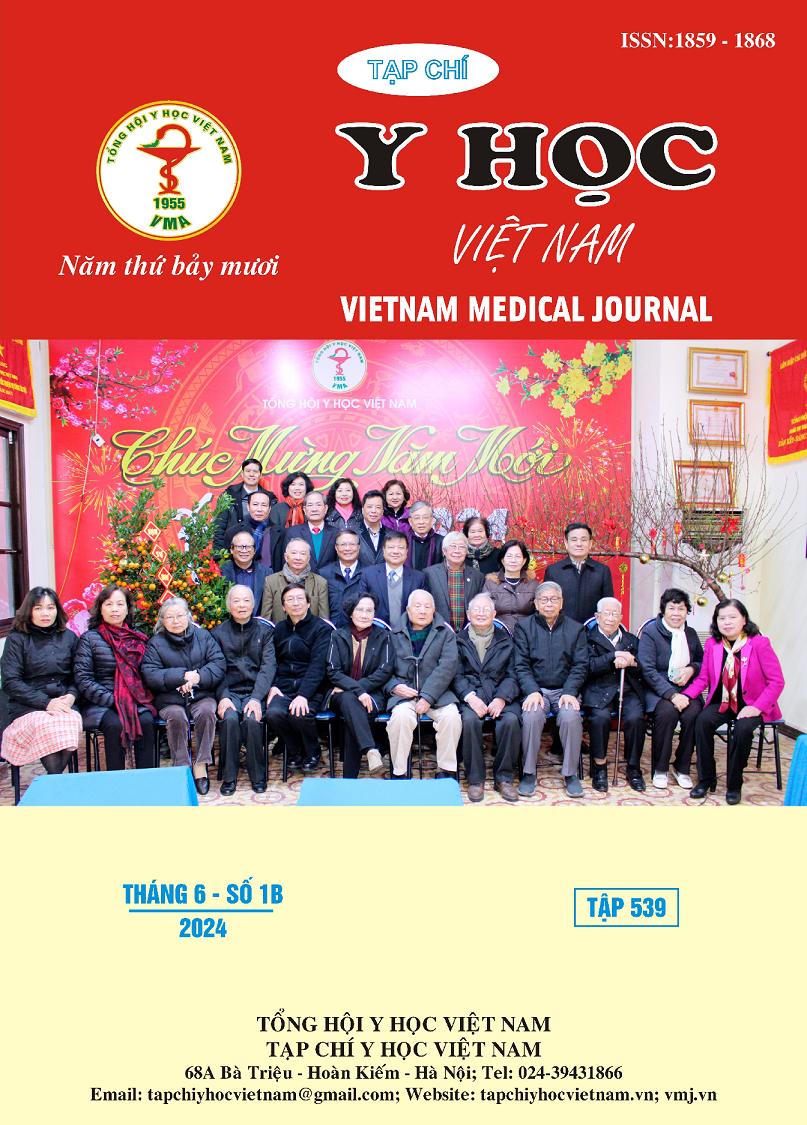EFFECTIVENESS OF REMOTE REHABILITATION IN IMPROVING THE LEVEL OF FUNCTIONAL INDEPENDENCE IN PATIENTS WITH CERVICAL ACCIDENTS AT HOSPITAL FOR REHABILITATION - PROFESSIONAL DISEASES
Main Article Content
Abstract
Objectives: To evaluate the effectiveness of tele-rehabilitation in improving motor function in stroke patients after 8 weeks of using a tele-rehabilitation application. Method: A randomized controlled clinical trial with a control group of stroke patients undergoing treatment at the Hospital of Rehabilitation and Professional Disease. Results: A study on the effectiveness of tele-rehabilitation in improving the level of independence in daily living activities in 68 stroke patients, with 34 cases in the control group and 34 cases in the intervention group. There was a statistically significant difference before and after the intervention in both groups (p<0.001). In the intervention group, the total FIM score increased from 73.6 ± 24.9 to 91.7 ± 24.1 after 8 weeks, an increase of 18.0 ± 4.2. In the control group, the total FIM score increased from 83.7 ± 24.2 to 103.3 ± 24.2 after 8 weeks, an increase of 19.7 ± 7.2. There was no significant difference in the effectiveness of the intervention between the intervention group and the control group (p=0.256). Conclusion: The intervention after 8 weeks showed an improvement in the level of functional independence in both groups. It is suggested to implement tele-rehabilitation applications more widely and improve the quality of the applications to enhance the effectiveness of tele-rehabilitation.
Article Details
Keywords
Tele-rehabilitation, Rehabilitation, Stroke Patients, HCMC.
References
2. Cong N. Stroke care in Vietnam. International journal of stroke: official journal of the International Stroke Society. Nov 2007;2(4):279-80. doi:10.1111/j.1747-4949.2007.00149.x
3. Mehndiratta MM, Singhal AB, Chaturvedi S, Sivakumar MR, Moonis M. Meeting the challenges of stroke in India. Neurology. Jun 11 2013;80(24): pp. 2246-2247. doi:10.1212/ WNL.0b013e318296e7c3
4. Peretti A, Amenta F, ayebati SK, Nittari G, Mahdi SS. Telerehabilitation: Review of the State-of-the-Art and Areas of Application. JMIR rehabilitation and assistive technologies. Jul 21 2017;4(2):e7. doi:10.2196/rehab.7511
5. Hailey D, Roine R, Ohinmaa A, Dennett L. Evidence of benefit from telerehabilitation in routine care: a systematic review. Journal of telemedicine and telecare. 2011;17(6):pp. 281-287. doi:10.1258/jtt.2011.101208
6. Lerner DJ, Kannel WB. Patterns of coronary heart disease morbidity and mortality in the sexes: a 26-year follow-up of the Framingham population. American heart journal. 1986;111(2): 383-390.
7. Clinic M. Stroke. Mayoclinic. Accessed 21/10, 2022. https://www.mayoclinic.org/diseases-conditions/stroke/symptoms-causes/syc-20350113
8. Sarfo FS, Adamu S, Awuah D, S K, Ovbiagele B. Potential role of tele-rehabilitation to address barriers to implementation of physical therapy among West African stroke survivors: A cross-sectional survey. J Neurol Sci. 2017;381:pp. 203-208. doi:10.1016/j.jns.2017.08.3265
9. Chen SC, Lin CH, Su SW, Chang YT, Lai CH. Feasibility and effect of interactive telerehabilitation on balance in individuals with chronic stroke: a pilot study. Journal of neuroengineering rehabilitation. 2021;18(1):pp. 1-11.


